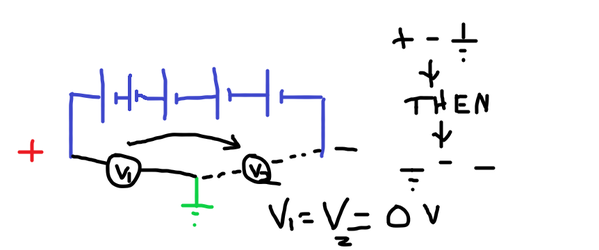B
broombox
Hi guys, I am new to the forum so be nice!
I used to install solar PV systems back when the tariffs were still good, and I've never had to go back to one of my old installs because of a fault, so I'm not too clued up with regards to fault finding on PV.
A customer has recently called me out to look at a PV system not working (installed by a firm that's now bust).
Everything looks all present and correct, but i cannot gain access to the panels without scaffolding. No visible obstructions from standing at ground level looking up at the array, and I can see up underneath where the wires are plugging into one another. I've seen worse installs, DC cables could have a few more clips in them but generally everything looks OK.
Now, the inverter (ABB aurora power one) looked like it had frozen when i got to it to have a look. switched off and rebooted, now coming up with a RISO fault, 0.00 M ohms, so that's obviously why the PV inverter isn't starting up. Tested the voltage on the strings + to - at 480 volts. This is for 14 panels on one string, so i think that seems about right. Now at this point, I do not have access to the inverter manual, it's a sunday so cannot phone anyone for technical advice, and it's about 30 degrees outside so i don't think i can megger the wiring with the voltage present without frying my meter.
I've now had chance to do a bit of research, obtained the inverter manual online, and it's recommending in the event of a ground fault, to test with a multimeter from + to earth and - to earth, and if there is a stable voltage, then there is an earth fault. The thing that's confusing me here though, is that there is no earth to the PV array - the panels are floating, and the rail etc is not bonded. The only earth to test against is the inverter earth, which connects back to the AC supply. So I don't see what testing to this earth, with the dc disconnected, is actually proving? As it is separate from the array on the roof. How can the inverter detect an insulation fault to earth, with no earth connected to the panels? surely what it is detecting is a + to - short circuit, and if so what is the correct way to test to prove this?
I contacted ABB technical, and they told me that a RISO fault as low as 0.00 M ohms is usually a faulty inverter. But that totally contradicts the advice in the inverter manual, and I need to prove 100% if the fault is on the array or not before I instruct the customer to have scaffolding put up.
Any help would be much appreciated!!
I used to install solar PV systems back when the tariffs were still good, and I've never had to go back to one of my old installs because of a fault, so I'm not too clued up with regards to fault finding on PV.
A customer has recently called me out to look at a PV system not working (installed by a firm that's now bust).
Everything looks all present and correct, but i cannot gain access to the panels without scaffolding. No visible obstructions from standing at ground level looking up at the array, and I can see up underneath where the wires are plugging into one another. I've seen worse installs, DC cables could have a few more clips in them but generally everything looks OK.
Now, the inverter (ABB aurora power one) looked like it had frozen when i got to it to have a look. switched off and rebooted, now coming up with a RISO fault, 0.00 M ohms, so that's obviously why the PV inverter isn't starting up. Tested the voltage on the strings + to - at 480 volts. This is for 14 panels on one string, so i think that seems about right. Now at this point, I do not have access to the inverter manual, it's a sunday so cannot phone anyone for technical advice, and it's about 30 degrees outside so i don't think i can megger the wiring with the voltage present without frying my meter.
I've now had chance to do a bit of research, obtained the inverter manual online, and it's recommending in the event of a ground fault, to test with a multimeter from + to earth and - to earth, and if there is a stable voltage, then there is an earth fault. The thing that's confusing me here though, is that there is no earth to the PV array - the panels are floating, and the rail etc is not bonded. The only earth to test against is the inverter earth, which connects back to the AC supply. So I don't see what testing to this earth, with the dc disconnected, is actually proving? As it is separate from the array on the roof. How can the inverter detect an insulation fault to earth, with no earth connected to the panels? surely what it is detecting is a + to - short circuit, and if so what is the correct way to test to prove this?
I contacted ABB technical, and they told me that a RISO fault as low as 0.00 M ohms is usually a faulty inverter. But that totally contradicts the advice in the inverter manual, and I need to prove 100% if the fault is on the array or not before I instruct the customer to have scaffolding put up.
Any help would be much appreciated!!













